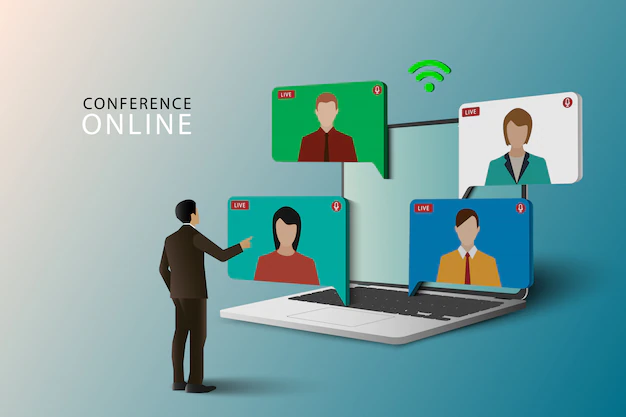The Top 12 Instructional Design Best Practices You Need to Know for Successful eLearning

The use of eLearning has increased significantly over the years, especially with the COVID-19 pandemic that forced many organizations to switch to remote working and learning.
However, for eLearning to be effective, it requires a systematic approach to instructional design that focuses on creating engaging and interactive courses that facilitate learning.
In this article, we will explore the top 12 instructional design best practices that are essential for successful eLearning.
Importance of instructional design in eLearning
For instructional designers, the benefits of the process are felt in the production phase while, for students, they’re felt when the class is launched.
Additionally, good instructional design allows you to:
- Move preexisting content online
- Share information and generate interest
- Encourage participation
- Ensure student retain what they learn
- Motivate students
Also read: How to Become a Successful Instructional Designer in 4 Steps
12 Instructional Design Best Practices You Need to Know for Successful eLearning
If you think your eLearning could use more of an instructional design approach, here are the 12 best practices for instructional design to motivate the unmotivated and engage the disengaged.
1) Create Clear Learning Objectives
Creating clear and measurable learning objectives is essential for successful eLearning. Learning objectives provide learners with a clear understanding of what they are expected to learn from the course.
When creating learning objectives, it is important to align them with the course goals to ensure that they support the overall learning outcomes. This helps learners to stay motivated and focused on achieving the desired learning outcomes.
2) Know Your Audience
Knowing your audience is critical for designing effective eLearning courses. Understanding the audience’s learning preferences and needs helps instructional designers to create courses that are engaging and relevant to the learners.
Strategies for identifying the audience’s learning preferences and needs include conducting surveys, focus groups, and interviews.
3) Use Engaging Multimedia
Incorporating engaging multimedia into eLearning courses is crucial for keeping learners engaged and motivated.
Multimedia such as images, videos, and animations can help to reinforce learning and make complex concepts easier to understand.
Best practices for incorporating multimedia into eLearning courses include using high-quality images, videos, and animations, and ensuring that they are relevant to the content.
4) Use Effective Instructional Strategies
Effective instructional strategies are essential for successful eLearning. Selecting the right instructional strategies can help to facilitate learning and make it more engaging for learners.
Best practices for selecting and using instructional strategies include using storytelling, scenario-based learning, and gamification.
5) Chunk Information for Better Retention
Chunking information is the process of breaking up large amounts of information into smaller, more manageable pieces.
This is essential for better retention as it allows learners to process and remember the information more effectively.
Best practices for chunking information include using bullet points, breaking up text with images, and creating short modules.
6) Provide Immediate Feedback
Providing immediate feedback is crucial for successful eLearning. Feedback helps learners to know how they are progressing and identify areas where they need to improve.
Best practices for providing feedback include using branching scenarios and interactive simulations.
7) Make it fun with gamification!
Gamification is the use of game play elements such as badges, points, stories, and levels in learning. There are many benefits, including increased motivation, learner autonomy, instant feedback, and creating an emotional connection.
Doing gamification right requires a lot of skill; you need elements of conflict, competition, chance—and a good story to keep learners engaged.
8) Let the learner be in control.
Adult learners like to be treated like adults. Let the learner navigate through the course in whatever order they prefer. Likewise, don’t enforce timing restrictions on specific pages or sections of a course.
Timing restrictions rarely guarantee that the learner will absorb the information just because they’re forced to stare at it for a longer period of time. Branching scenarios for a personalized learning experience can also make learning more relevant.
9) Provide Personalized Learning Experiences
Personalized learning experiences are essential for successful eLearning. Personalization helps to cater to individual learners’ needs and preferences, making the learning experience more engaging and effective.
Best practices for personalizing learning include using adaptive learning technology and providing individualized feedback.
10) Foster Collaboration and Social Learning
Collaboration and social learning are crucial for successful eLearning. Incorporating collaborative learning activities such as group projects and online discussions can help to promote social learning and facilitate knowledge sharing.
Best practices for fostering collaboration and social learning include providing opportunities for learners to work together and facilitating online discussions.
11) Tell a story.
Humans have been telling stories for thousands of years. In fact, stories are simply vessels to pass information from person to person.
Consider the role of storytelling in creating engaging training scenarios: You could use a character that seems familiar to the learner or start training with a common problem.
As you advance through the training, the story advances as well, ending once the learner is successful. Storytelling keeps learners glued to the content and is one of the best tools for instructional design.
12) Evaluate and Revise Course Content
Evaluating and revising course content is crucial for successful eLearning. This involves gathering feedback from learners, analyzing the feedback, and making changes to the course content based on the feedback. Evaluation can be done through various methods, such as surveys, focus groups, and pilot tests.
Learner feedback can be used to identify areas where the course content is unclear, confusing, or irrelevant. This feedback can also be used to identify areas where learners need additional support or resources.
Based on the feedback, course content can be revised to make it more engaging, relevant, and effective.
Conclusion
Instructional design asks you to rethink the way you create and deliver eLearning. With so many exciting educational technology theories and tools available, there’s more opportunity than ever to create something truly great.
Implementing these 12 best practices for instructional design recharges your training and keeps your learners alert (no heads on desks!) and motivated to learn
By using these best practices, you can create eLearning courses that are accessible, effective, and engaging, and that provide learners with the knowledge and skills they need to succeed in today’s rapidly changing world.






